Raku is a Japanese inspired method for firing clay that creates unpredictable
smoke patterns and spectacular metallic and crackle effects in the glazes.
After initially firing your clay piece in an electric kiln, you fire it
(bisque) a second time in a gas kiln. When the temperature of the piece
reaches between 1600 and 1800 degrees, you place it in a nest of combustible
materials (leaves, sawdust and pine needles), cover the item with a metal
container, and wait about 15 to 20 minutes. Then remove the piece and dip
it in water.
As a result of its aesthetic characteristics
prized by Zen Buddhism, Raku-ware
plays an important role in the Tea-ceremony, that is of Zen origin. The
tea-bowls, shaped by hand and roughly finished, very much appeal to tea-masters.
The arbitrary character of their form and color and the accidental effects,
give the objects an entirely natural and spontaneous appearance (wabi),
appreciated by Zen practitioners and tea drinkers. In particular tea-bowls
have become a major expression of Zen art.
Below are some photo's of raku-ware by the author.
Three tea-bowls (chaire), a tea-container and a utensil case.
»»»
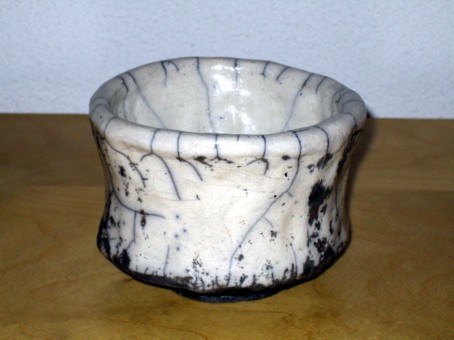
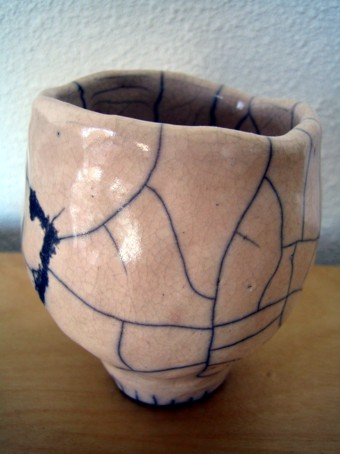
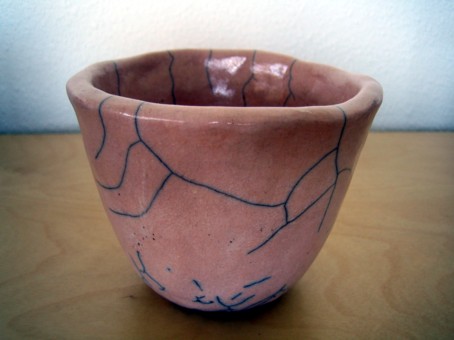
The tea bowl at the top left is in the classic rounded and heavy style.
The top right one is a "Winter" bowl and the bottom one is a
"Summer" bowl.
You can move the pointer over the Winter bowl to see the inside-bottom.
The last drops of thick green tea will hang on the center-form that will
then make it easier to empty the bowl.
In line with Zen aesthetic bowl are often asymmetrical and show other imperfections
like out of shape (hand-formed), cracked glazing or blobs. Part of the
art is to not only have imperfections but also to have them seem old and
weathered with a natural patina (sabi). A bowl should show absolutely no
evidence that any conscious attempt was made to create a work of art. It
should appear completely functional (wabi).
»»»
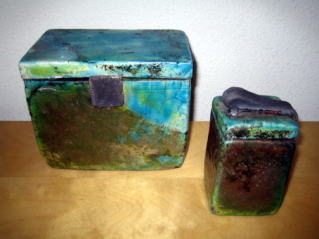
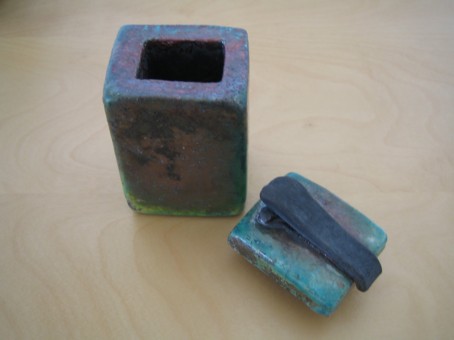
For more on the origens of raku and raku-ware see: The Raku museum of Kyoto
Some of the works of Marijke are shown below.
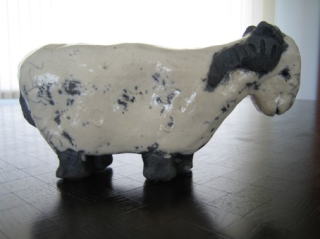
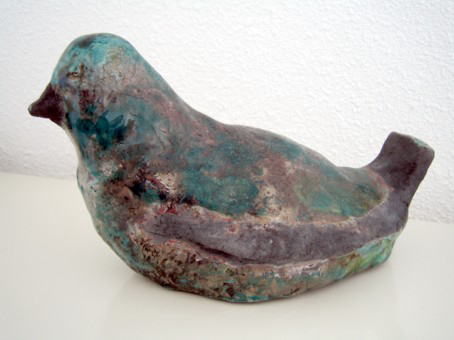

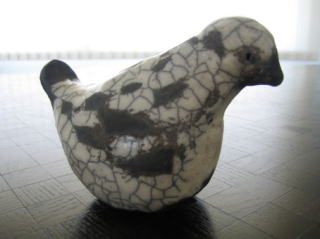
![]()